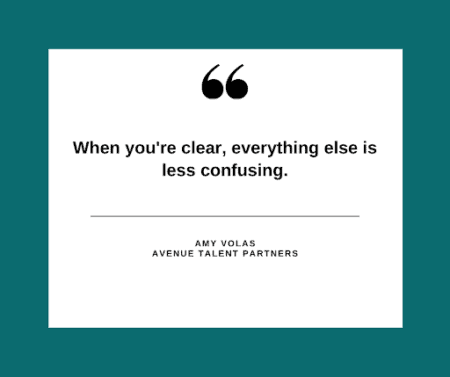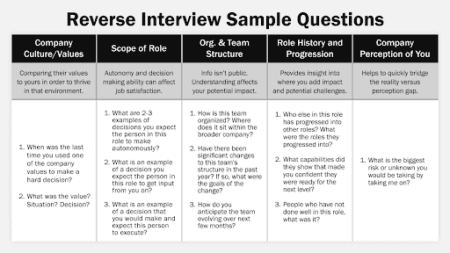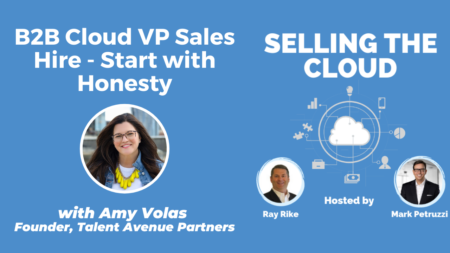
How to Ace the Hiring Process for Founders AND Sales Leaders
Raise your hand if you think interviews are a time-consuming, daunting process for everyone – on both sides of the table… Me too 🙋♀️
So imagine how much time is wasted when you get it wrong?!
When you break it down, every interview is a meeting between two parties to confirm or deny if they want to work together.
Without the right approach and legwork upfront, it’s a risky proposition and unlikely either side will be equipped to make the right decision.
Unfortunately, I hear about this dilemma daily and why I’ve decided to break down what it really takes to ace the interview process on both sides of the table.
Hint hint… it’s about specificity and intentionality.
We often know what we want to say or ask in an interview, but it’s rare to think deeply about how we go about it, what we can do to truly understand the task at hand to make a good decision, and how our approach might impact the other side.
By honing in on what both sides need to consider to get it right, you’ll have a much better understanding of how to structure and prepare for each interview so it’s informative, effective, and fruitful for everyone involved… even if it’s a “no thank you.”
ON THE HIRING SIDE
We recently worked with a VP of Sales that had another opportunity they were equally qualified for and honestly, more excited about. It was the final stretch of the process and their choice had narrowed between my client and this other role.
The deciding factor… the final interview. A big day on both sides filled with presentations and workshops.
The difference?
Our client came prepared, had people in the room that were prepared, they had talked beforehand to understand what they wanted to do with the time together, had an agenda, stuck to it, collaborated, had time for both parties to ask questions, got down to the nitty gritty details TOGETHER, and had a real business conversation… less theory and more practice.
The other opportunity?
The left hand and the right hand weren’t talking to each other, they were texting during the meeting, and one person even got up in the middle of the meeting! They had no idea what was covered in the other meetings and asked the exact same questions, so each person was telling a different story and it raised red flags instead of providing clarity.
Guess who’s opportunity was accepted?
Point being: you need to show up prepared.

Winging an interview – especially a crucial final interview – is an opportunity to truly stand out or a landmine riddled with missed opportunities. Talented people expect to be treated with respect. Just like you.
That means:
- Do your research beforehand about them
- Debrief internally to understand what’s already been covered and what needs to be discussed
- Know the role inside and out
- Come prepared with focused questions that cut to the heart of their experience and skill set
- Approach it like a collaborative, two-way business conversation
Likewise, many candidates know how to absolutely nail an interview, but that doesn’t always translate into them being a great fit.
That’s why it’s critical to peel back the layers together to get as close to the work required to do the job well.
A great way to do this is to pinpoint specific real-life scenarios the business is facing and dig into the details together.
We like to do this on-site (if you can) to pay close attention to not just what they’re saying, but how they show up… body language, overall demeanor, the questions they ask, their overall level of engagement, and how they act in-between these big conversations.
This is a great way to get candidates out of interview mode.
Go into every interview knowing exactly what you’re looking for.
The clearer you are on the type of person your company needs, the easier it is to stay laser-focused during an interview. Simply put, when you’re clear, everything else is less confusing.

Be sure to align your interview questions and hiring process for the specific details that matter for the role today and the near future, not where you think you might be in 5 years. The more specific you are, the better.
Dig deep into what the candidate has done, how they’ve done it, why they thought it was important, and lessons learned. Reflect on how that connects back (or not) to what you need and your plans for growth.
It’s important to be honest here. Don’t embellish anything in the interviews to try to sell a candidate on the role. It’s always best to lay out all the details in a clear, methodical way. Remember, they’re going to find out about it one way or another. It’s better and a heck of a lot less painful to understand that now.
I know, I know, this takes time. Slow is smooth and smooth is fast, don’t rush into the process without coming up with a clear plan beforehand.
Be clear on compensation.
I don’t like it when people jerk around with my money, do you?
After your leadership, product-market fit, and path for success, compensation is a critical factor affecting a sales leader’s decision to make a move. Understanding this early and often is critical and automatically sets you apart from the rest.
Sharing these details early comes with a host of benefits:

Being clear about compensation early means you avoid confusion later. Especially in this white-hot market where compensation has elevated 20%+ in the last 6 months.
Use a hiring scorecard.
Hiring scorecards are an absolute godsend for the interview process. We use this in every search and I can confidently say, it’s made a huge difference in the long-term results.
An interview scorecard is a priceless tool that’ll help your hiring team stay on track, mute the stories we start to tell ourselves that aren’t rooted in reality, and not get caught up in the shiny objects.
ON THE CANDIDATE SIDE
One of my favorite recent interviews was with a VP of Sales candidate. Here’s a snapshot of how they presented their experience to us:
“I saved the company $$$ every month. Our burn was X, our revenue was Y, our profit was Z, and our churn was XX%. This is how I did it…”
This candidate laid out all the details of their previous experience in a clear, concise way that made it crystal clear and oh so magnetic for us to understand what they bring to the table.
The interview stood out because they knew what they did like the back of their hand and were able to back the big statements up with the how in an easy to digest way, leaving us wanting more. Everything was crystal clear and we didn’t have to pull teeth to find out. These are the interviews where you stand out and are invited back.
When you’re able to understand your experience while making it easy for anyone else to understand it, it’s a home run.
Before an interview, get specific.
Here’s how:
- Where did you do X?
- Who did you do it with?
- Why did you do it?
- What was the outcome?
- What did you learn from it?
- So what?.. How does this tie into the current role and why should they care?
Taking the time to develop 1-3 power statements that quantify and qualify each question immediately makes you standout and how you leave interviewers wanting more!
Intentionality is key in any interview. Just like in sales.
High-quality candidates have high-quality interviews. So if you want to make a great impression, there are no shortcuts. You have to take the time to put it all together.
Research the interviewer you’re meeting with.

If you’re in sales, you know how important it is to know your customers before a big meeting. Interviews are no different.
As Benjamin Franklin said, “if you fail to plan, you plan to fail.”
Get into the weeds a bit to research the people you’re scheduled to interview with:
- What are they talking about on LinkedIn, Twitter, Blogs, Podcasts?
- Set up a Google alert on the company the minute you agree to interview to stay on top of what’s happening
- Use LinkedIn to understand your mutual connections and leverage those relationships to understand more
- Research their competitive landscape, I love tools like Owler.
- Attend their events, do their demos, lean into understanding their buyer journey.
These investments pay off and make an indelible impression in the interview.
Why?
Because that preparation will come through when you’re having a conversation to show them you’re taking this seriously, the commitment you’ve made to the task at hand, and points to the fact that if you’re doing this now, you’ll be doing the same thing in the role.
Flip the script with a reverse interview
The best interviews are a two-way discussion to mutually discuss what makes sense (or not). Simply put, interviewing for a role isn’t all about the company. It’s about you too! Remember, you’re evaluating the company as much as they’re evaluating you. After all, this is your life and career… nobody cares about that more than you.
Reverse interviewing is about getting to the reality of the situation, to dig well below the surface. It’s a way to proactively shape the company’s perception of you instead of relying on their interview process to do it for you.

This reinforces the fact that you’re taking this opportunity and process seriously and showcases your initiative.
It’s also a tremendous way to look for the “tells.” If the interviewer can’t answer your question, skirts the topic, or pushes you off… insert a red flag.
Use a job scorecard
When you’re out there interviewing and evaluating companies/roles, it’s important to anchor yourself to yourself. Knowing what’s important to you, what good looks like, what you need, what you want to steer clear of, and most importantly why. This is how you keep yourself on track to make an incredible career decision. Clarity is king.
Just like the hiring side, this scorecard is a priceless tool that I highly recommend adding to your process.
If ALL else fails and you’re wondering what employers are really looking for, my Ultimate Guide to Finding a Sales Job is here to help you demystify the process. It’s my tried and true, proven process to land the right role the first time around.
Wrapping Up
Interviews are a two-way street. And the best interviews happen when both sides show up to the table well-prepared and eager to dig into ALL of the important bits and pieces together.
You can’t fake intentionality. When both parties put the time in to understand, can get specific about the details, own what’s falling short, and be clear about what’s needed to move forward together (or not), that’s when the magic happens.
